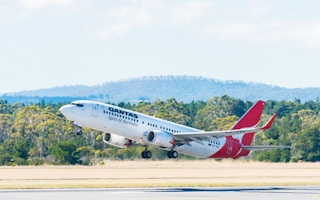When was the last time you booked a flight? That extra A$1 in the final stages of booking may seem a small price to pay for offsetting the carbon emissions you generate travelling by air. But globally and across consumer companies, offsets are not only greenwashing, but can do more harm than good.
Many consumer companies, from airlines to electricity companies to car dealerships and even some wedding and funeral homes, give their customers the opportunity to “neutralise” the environmental impacts of their products through carbon offsetting.
Offsets give the consumer the impression that their consumption has no negative net effect on the environment, and allows companies to gain green credentials. But in reality, the scale of change that can be achieved by voluntary individual offset schemes is entirely disproportionate to the scale of the problem of global warming.
Offsetting responsibilities
For a start, very few customers elect to pay the extra sum to offset their emissions, about 5 per cent in the case of airline passengers.
Yet providing carbon offsetting options has public relations value for companies, allowing them to gain green legitimisation without having to significantly reduce their greenhouse gas emissions. This form of elective carbon offsetting shifts the responsibility for greenhouse gas reductions onto individuals and away from institutions, corporations and governments, whose actions can make a more significant difference.
“
This form of elective carbon offsetting shifts the responsibility for greenhouse gas reductions onto individuals and away from institutions, corporations and governments, whose actions can make a more significant difference
While we don’t know exactly where airline offset money goes, carbon offset money is mainly spent on investments in renewable energy, efficient energy projects, methane capture, and biosequestration projects that absorb CO2, such as tree plantations. In 2012, 34% of the global voluntary offset market was spent on renewable energy projects and 32 per cent on biosequestration.
Many of these offsets are of dubious value in terms of genuine greenhouse gas reductions. Planting trees as offsets is particularly problematic.
The problems with plantations
Tree plantations are not always good for the environment. They suck up much of the water in an area, increase erosion and compaction of the soil, reduce soil fertility and increase the risk of fire.
The trees are planted in rows of the same age and species, requiring heavy use of agrichemicals including fertilisers, chemical weeders and herbicides that pollute the environment and kill native animals. Because plantations create monocultures, they do not provide the variations of form and structure found in a forest.
There are also problems when it comes to working out the quantity of trees needed to offset one tonne of carbon. According to the US government figures, 25 tree seedling growing for ten years would offset 1 tonne of carbon dioxide. However, even the best methodologies for calculating this are inaccurate. The amount of carbon dioxide a growing tree will absorb varies depending on tree species, soil type, amount of soil litter and below-ground biomass.
Plantations aren’t the only concern. The international Voluntary Gold Standard for offsets favours renewable energy and energy-efficiency projects over tree plantations or methane capture. However, it is difficult to regulate or assess the effectiveness of these projects.
Offshoring offsets
Qantas offset schemes, through offsetting companies, include native forest protection in Tasmania, wind power in China, more efficient wood stoves in Cambodia, and replacing fossil fuels with biomass for powering cement plants in Thailand. All these projects meet the Australian Government National Carbon Offset Standard (NCOS), as do Virgin Australia’s. However it is difficult to say whether this is a sound use of offset money.
How can we be sure that more efficient wood stoves would not have been purchased anyway, that the wind power plants in China would not have been built, or that the forest in Tasmania would have been logged without Qantas paying for its protection?

Weld Valley, Tasmania. QANTAS has contributed some money from offset payments to protect Tasmanian forests. Image: Ta Ann Truths/Flickr, CC BY Click to enlarge
Offsets that are located in countries that have already committed to greenhouse gas reduction targets are likely to be double counted, first as an offset and second as a reduction in the total national greenhouse gas inventory, a reduction that would have had to happen anyway.
Buying up cheap offsets in developing nations at US$3.50 per tonne in 2013 is a short-term solution that only postpones the necessary phasing out of fossil-fuel dependence in wealthy nations, at a time when such action is becoming urgent. Cutting greenhouse gas emissions in poor countries is not enough to prevent further global warming. We should be giving first priority to becoming less dependent on fossil fuels in Australia through changing the way we generate electricity and making manufacturing less energy intensive, as well as promoting alternatives to automobile travel and truck freight.
Carbon offsets are a greenwashing mechanism that enables individuals to buy themselves green credentials without actually changing their consumption habits, and nations to avoid the more difficult structural and regulatory change necessary to prevent further global warming.
Professor Sharon Beder, an honorary professor at University of Wollongong, has written 10 books and many book chapters, articles and conference papers, as well as consultancy reports and teaching resources. This post originally appeared in The Conversation.










